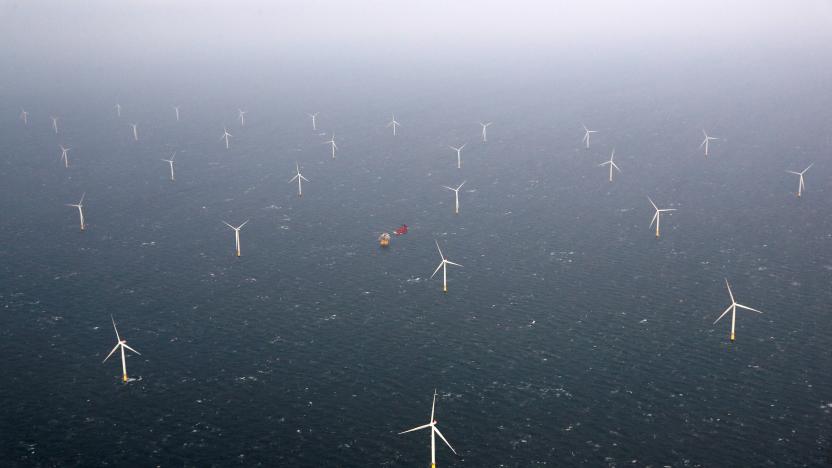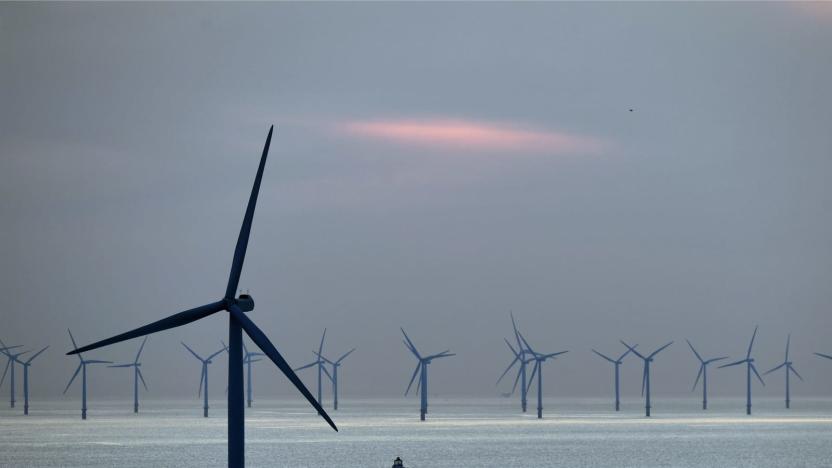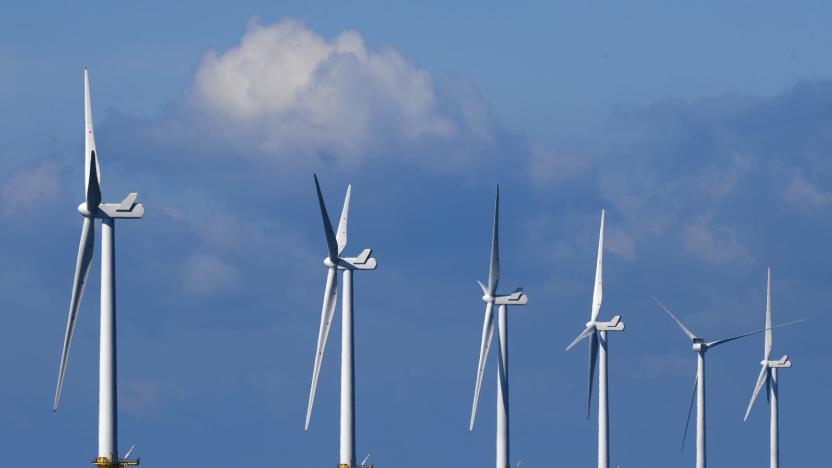biomass
Latest

Europe created more energy from renewables than fossil fuels last year
Europe is slowly reducing its dependancy on fossil fuels. A report co-published by Ember and Agora Energiewende, two think tanks focused on clean energy, has revealed that the continent generated more electricity from renewables than fossil fuels in 2020.

The UK likely got more power from renewables than fossil fuels last quarter
The UK generated more power from renewable sources than from fossil fuels in the third quarter of 2019. This is the first time that's happened since the UK opened its first public electricity-generating station in 1882. The findings, revealed in an analysis by Carbon Brief, speak to progress the country has made in transforming its electricity system over the past decade.

Renewable energy outstripped coal use in the UK for most of 2017
The UK has been working to significantly reduce its carbon emissions and with that effort, it hit some major green milestones this year. In April, the country went a full day without coal-generated power for the first time in 135 years. And in June, the country saw more than half of its energy being generated by renewables (i.e. solar, wind, hydropower and biomass) for the first time.

Lockheed Martin's bioenergy plant turns waste into clean power
When it's not taking forever to deliver the F–35 or creating new blimp inspection drones, Lockheed Martin is hard at work finding ways to turn actual trash into useable clean energy. At its Owego, New York facility, where the company builds space-flight gear and military helicopters, the group has partnered with Germany-based Concord Blue to unveil a 250 kilowatt "advanced gasification plant" that will convert 3,650 tons of bio waste into electricity for the facility every year.

Inhabitat's Week in Green: fuel efficiency flies high, turbines touch the sky, and salt that stores sunlight
Each week our friends at Inhabitat recap the week's most interesting green developments and clean tech news for us -- it's the Week in Green. This week Inhabitat brought you a surge of renewable energy news as groundbreaking projects supercharged every corner of the world. London officially crowned the first skyscraper with built-in wind turbines while Sicily generated solar power in the dead of night with the world's first solar plant that stores energy using molten salt. And speaking of solar power, China is heating things up with the largest building-integrated photovoltaic plant on the planet. In transportation news, we scored an exclusive interview with auto manufacturer Edison2, who is currently coming up aces with three ultra-efficient vehicles in the final stages of the Progressive Auto X Prize -- and we watched high-tech aviation soar to new heights as Airbus unveiled its vision for a fuel-efficient aircraft of the future. Finally, we were wowed by the world's first biomass consuming robot, which actually eats, excretes, and can run for a whole week unsupervised. If you're thinking "I can do that" then we encourage you to try - why not start training with this exercise-inducing treadmill desk? Don't forget to wear your spiffy glow-in-the-dark performance wear; your co-workers will love it.

EATR's engine officially complete, and this robot's one step closer to reality
If you're anything like us, you've probably been keeping pretty close tabs on EATR, the biomass-to-power robot that's been making people nervous for some time now. Well, EATR's engine -- which is being built by Cyclone Power Technologies -- is complete, and the drone is now one giant leap closer to living in actual reality with us. The completed steam engine, called WHE, is a six-cylinder external heat engine which can generate up to 18 horsepower of mechanical power. As previously clarified by EATR's makers (a project that's getting help from the University of Maryland and DARPA), the robot will not feed on things like animals... or humans. No, this is no zombified drone -- EATR will harvest only plant matter for energy -- which, if you ask us, makes the whole thing much more mundane. Regardless, we'll be keeping our eyes on this project as it moves forward. The full press release is after the break.

EATR robots claim to be vegetarian... sure
Usually when we freak out about the coming of killer robots, nobody bothers to disagree with our histrionics, which is in itself a comforting sign that we're overreacting. On the other hand, if the makers of a chainsaw-wielding robot take the time to point out that it is not a flesh-eating harbinger of the apocalypse, well... Cyclone Power and Robotic Technologies, the companies behind the weaponized EATR drone, have put together a joint press release to comfort us all that the biomass-harvesting machine will be exclusively vegetarian, meaning it would only feed on "renewable plant matter" and not the bodies littering the battlefield. There's no reason not to believe them, though you should remember that in the eyes of a robot, humans are renewable too. [Via Wired]

EATR robots are coming, this isn't funny anymore
Oh sure, we joke about rogue AI all the time, and we're aware that we'll probably pollute ourselves to death well before the robots get us, but who really thinks flesh-eating machines are a good idea? The (patently evil) scientists behind the EATR project -- no fair, they're making their own jokes now too -- have reached a new milestone in the development of the reconnaissance bot, successfully coupling a steam generator with a compact biomass furnace. It is now therefore possible for an autonomous machine to forage for and refuel itself with biomatter, otherwise known as soft, pulsating, yummy humans. They call it fuel versatility, as gasoline, diesel, and solar power may also be used if available, yet we'll offer no prizes for predicting which energy source these chainsaw-equipped robots will prefer. [Via Switched]

Upstart Solazyme promises to make fuel from algae
It's not the first to turn to algae and biomass as a source of fuel, but upstart Solazyme seems to think it's got a leg up on other biofuel makers and its apparently lining up the deals and big bucks to prove it. As Technology Review reports, that includes Chevron, which is now in a "testing agreement" with the start-up, and the National Institute of Standards and Technology, which dished out a $2 million grant to the company. The trick that's attracted all that interest, it seems, is the company's particular way of using algae to convert biomass into fuel, which takes the apparently unorthodox approach of growing them in the dark, which causes them to produce more oil than they do in the light. What's more, Solazyme's method also apparently allows them to use different strains of algae to produce different types of oil, including a mix of hydrocarbons that's similar to light crude petroleum. Needless to say, all of this is still quite a ways away from finding its way into your car's tank, but the company has demonstrated its algae-based fuel in a diesel car, so it's at least moved beyond the lab.

MIT students' Biocell creates electricity from biomass on the cheap
Five MIT students under the team name BioVolt have created a $2 gadget that uses biomass to generate electricity. The output of the device isn't particularly significant -- six months to charge your cell means you shouldn't throw away that charger just yet -- but the low cost of the components, the availability of "biomass," and the capability for chaining multiple devices together means this is the perfect solution for isolated areas or poor communities. It's good news for the researchers too, who happened to win $5,000 in a design competition for their efforts. Good show lads.



